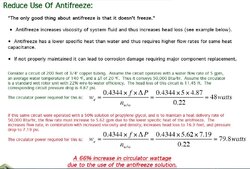So here is what I am trying to do - integrate solar hot water with a Garn WHS1500 (holds 1500 US gallons - 5000 L). The Garn is going to provide space heating (2 floors of radiant heat in the house) and DHW. By integrating solar, I would presumably shorten the wood heating season (spring / fall). In the summer the Garn would become a heat dump and provide the DHW (hopefully) without having to fire the Garn. The 6 panels are used flat plate 4' x 8' collectors. I was hoping to use a single solar circulator (Laing Solar DC-5) which is supposed to produce a max of 7 gpm. By running 1/2" black pipe back and forth inside the bottom third of the Garn I would avoid a heat exchanger and a 2nd solar pump (Shurflo 2088). I am wondering if this is a good idea (the downside being if a leak developed inside the Garn I would have to drain it). Not sure how much black pipe I would need to simulate a heat exchanger. I do know that I have to use black pipe in order to avoid the problem of dissimilar metals. I choose a 1/2" thinking it gives me the best surface area to volume ratio. Any suggestions?
Hopefully that gives you an idea of what I am hoping to accomplish. As a bit of an aside, I am also looking for a DC pump that will push about 5 gpm through a 1" ID pex from the Garn (non-pressurized) to the house.
Hopefully that gives you an idea of what I am hoping to accomplish. As a bit of an aside, I am also looking for a DC pump that will push about 5 gpm through a 1" ID pex from the Garn (non-pressurized) to the house.


